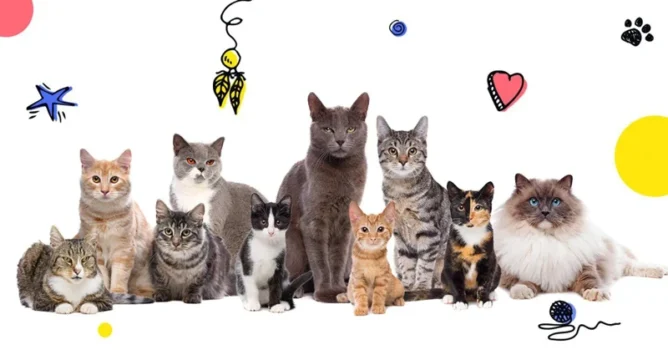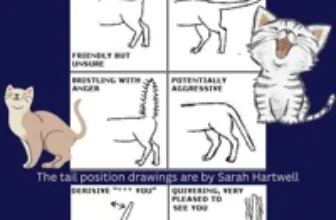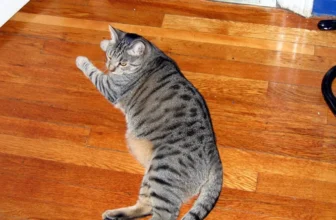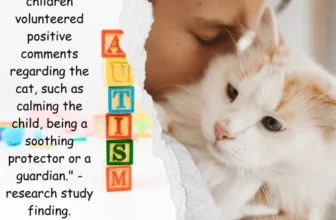We all love our beloved California Spangled cat, but let’s face it – destructive behavior can be a real nightmare for any cat parent. Whether our feline friend is scratching up our furniture, chewing on items they shouldn’t be, or biting us, it can be frustrating and concerning. But don’t worry, there are solutions! In this article, we’ll examine how to address and prevent destructive behavior in California Spangled cats step-by-step. Through understanding their breed-specific behaviors and personalities, preventing destructive habits, and addressing problem behavior, you can help your California Spangled be the well-behaved companion you always knew they could be. So, let’s get started!
Understanding Your California Spangled
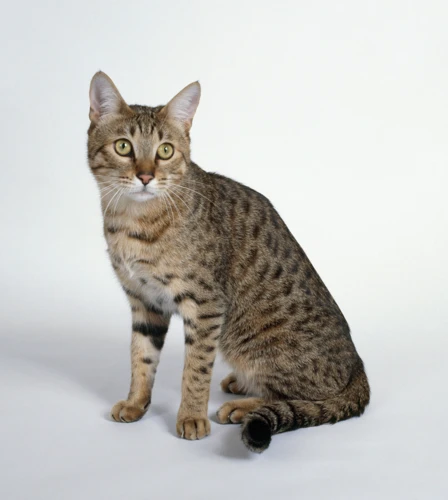
Understanding Your California Spangled is crucial when it comes to addressing destructive behavior in your cat. These cats have unique personality traits and breed-specific behaviors that make them different from other cat breeds. It is important to identify these traits to prevent destructive behavior and provide the necessary behavioral training and enrichment for your cat. In this section, we will discuss the personality traits and breed-specific behaviors of California Spangled cats and provide insights on how to address problem behavior. For more information about the territorial behavior of California Spangled cats, check out our article on territorial behavior.
Personality Traits
California Spangled cats are known for their unique and captivating personalities. Understanding their traits is essential in addressing destructive behavior in these cats. Here are some of their distinctive personality traits:
- Playfulness: California Spangled cats are known for their playful nature. They love to play with toys and interact with their owners.
- Curiosity: They are highly curious creatures that like to explore their environment. It is important to provide them with opportunities to explore and keep them mentally stimulated.
- Independent: These cats often enjoy alone time and can be independent in nature. They prefer to have their own space and may not interact with their owners all the time.
- Affectionate: Despite their independent nature, California Spangled cats can be very affectionate and loving towards their owners. They enjoy receiving attention and like to snuggle up with their owners.
- Intelligence: These cats are highly intelligent and can pick up on things very quickly. It is important to provide them with mental stimulation and interactive toys to keep them engaged.
- Agility: California Spangled cats are known for their agility and love to climb and play. Providing climbing space and opportunities to climb is essential in keeping them happy and healthy.
Understanding these personality traits can help in preventing destructive behavior in California Spangled cats. Providing them with an environment that meets their needs, including climbing space and interactive toys, can help keep them mentally stimulated and prevent boredom. For more information on California Spangled cat traits, check out our detailed guide for California Spangled cats personality traits.
Breed-Specific Behaviors
California Spangled cats are known for their unique personality traits and breed-specific behaviors. Understanding these is crucial in addressing destructive behavior in your cat. Here are some breed-specific behaviors found in California Spangled cats:
- Active Nature: California Spangled cats are highly energetic and love to play. They require plenty of physical and mental stimulation to prevent destructive behavior.
- Climbing: These cats love to climb and require adequate space to do so. Providing climbing structures such as cat trees can help prevent destructive behavior.
- Curiousity: California Spangled cats are curious and inquisitive by nature, which drives them to explore their environment. Providing a safe and stimulating environment can satisfy their curiosity and prevent destructive behavior.
- Independent Personality: These cats are known for their independent nature and may become destructive if left alone for long periods. Interaction with owners and a healthy routine can help prevent destructive behavior.
- Aggression: While not common in California Spangled cats, some may display aggressive behavior towards other cats or children. Understanding this behavior and following tips and tricks can help prevent destructive behavior and improve cat-human relationships.
Knowing the breed-specific behaviors of your California Spangled cat can help you understand the cause of destructive behavior and prevent it from happening in the first place. Creating a safe, stimulating, and healthy environment, through activities such as climbing and playing, can help curb your cat’s destructive tendencies.
Common Destructive Behaviors
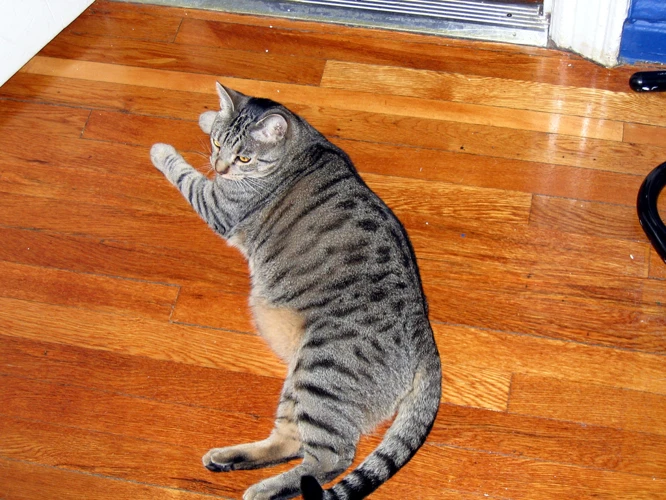
As much as we adore our California Spangled cats, they can sometimes exhibit destructive behavior that frustrates even the most patient owners. It’s important to understand that cats can express themselves in various ways and destructive behavior may arise from various reasons. In this section, we’ll explore some of the most common destructive behaviors in California Spangled cats, including scratching, chewing, and biting. By identifying the behaviors, what causes them, and how to deal with them, we hope to help you establish a lasting and satisfying relationship with your California Spangled cat.
Scratching
California Spangled cats are known to be active and energetic felines who love to scratch. Their natural instinct to scratch can lead to destructive behavior that can damage furniture, carpets, and other household items. To prevent destructive scratching, it is important to understand why cats scratch and how to redirect their behavior.
Why Do Cats Scratch?
Cats scratch for a variety of reasons, including:
| Reason | Description |
| Marking Territory | Cats have scent glands in their paws that they use to mark their territory |
| Stretching | Scratching helps cats stretch their muscles and promotes healthy movement |
| Relieving Boredom or Stress | Scratching can be a way for cats to relieve stress or get rid of excess energy |
Redirecting Scratching Behavior
To redirect your California Spangled cat’s scratching behavior, provide them with appropriate scratching alternatives such as scratching posts or boards. Place these alternatives in areas where your cat likes to scratch, such as near their favorite sleeping spots. You can also try using catnip or treats to encourage your cat to use their scratching alternatives.
In addition to providing scratching alternatives, it is important to discourage your cat from scratching furniture or other household items. One way to do this is to use double-sided tape or aluminum foil on the surfaces you want to protect. Cats don’t like the texture of these materials and will avoid scratching them.
Conclusion
By redirecting your California Spangled cat’s scratching behavior and setting boundaries, you can prevent destructive behavior and protect your household items. Remember to always provide your cat with appropriate enrichment and training, and seek professional help if behavior problems persist. With patience and consistent training, your cat can learn to scratch in appropriate areas without damaging your home environment.
For more information on creating a cat-friendly environment for your California Spangled, check out our article “Creating a Cat-Friendly Environment for Your California Spangled.”
Chewing
California Spangled Cats have an innate need to chew and gnaw on objects, particularly as kittens. However, if this behavior persists into adulthood, it can become destructive. Chewing can cause damage to furniture, shoes, and even electrical wires, which could be dangerous for both the cat and the household.
Understanding Why Cats Chew
Like other cats, California Spangled Cats chew as a way to explore their environment. However, there are also other reasons why they may engage in this behavior, including boredom, anxiety, and teething. As such, it’s essential to identify the root cause of the chewing to address it effectively.
Preventing Destructive Chewing
One of the best ways of preventing destructive chewing in California Spangled Cats is by providing them with toys that satisfy their need to chew. Chew toys, such as those made from rubber or nylon, can also help clean their teeth and massage their gums. Additionally, providing climbing space can help redirect cats from destructive chewing. You can make structures that stimulate their natural abilities to explore or buy special climbing structures. This way, cats can have a designated area to satisfy their chewing urge that will prevent damage.
If you want to learn more about how to create a comfortable home for California Spangled Cats or on how to design their climbing space, you can check our guide on /ca-spangled-cats-climb-need-climbing-space/.
Correcting Destructive Chewing
When catching your California Spangled Cat chewing on inappropriate objects, the best response is to redirect their attention to chew toys or a climbing structure. Do not punish or yell at your cat since it will only increase anxiety, worsening the situation. It’s important to understand that a cat chewing on objects is natural behavior, and redirecting that behavior is the key to success!
When to Seek Help
If your California Spangled Cat’s chewing behavior persists despite the above tips and tricks, it’s essential to visit a veterinarian to rule out any health issues. In some cases, chewing may be a symptom of an underlying medical condition such as dental problems or digestive issues. Our guide /california-spangled-cat-health-behavior/ has more information on how to manage your cali cat’s health.
Conclusion
Understanding the reasons behind your California Spangled Cat’s chewing behavior is essential in addressing it effectively. Providing chewing toys and giving cats designated climbing spaces can go a long way in preventing destructive behavior. And remember, redirecting your cat’s attention is key, as punishment only leads to tension and anxiety in cats.
Biting
Biting is another destructive behavior that California Spangled cats may exhibit. It is important to note that biting in cats is typically a sign of distress or fear rather than aggression. If your cat is biting you, it is important to identify and address the underlying cause of their behavior.
Common Reasons for Biting:
- Overstimulation: California Spangled cats, like many other cats, have a threshold for how much physical touch and play they can handle. If they become overstimulated, they may respond by biting or scratching.
- Pain or discomfort: If your cat is experiencing pain or discomfort, they may bite in an attempt to communicate this to you.
- Fear or anxiety: If your cat is fearful or anxious, they may bite as a way to defend themselves or escape from the situation.
Addressing Biting:
- Redirecting Behavior: If your cat is biting due to overstimulation, redirecting their behavior can help prevent this behavior from occurring. Offer your cat toys and other sources of entertainment to redirect their energy.
- Setting Boundaries: If biting occurs during playtime, set boundaries with your cat. Establish what type of play is acceptable and what actions lead to an end of play.
- Positive Reinforcement: Remember to praise and treat your cat when they exhibit good behavior, and provide them with comfort and reassurance when they are fearful or anxious.
- Seeking Professional Help: If biting continues to be a problem, it may be beneficial to seek help from a professional. A veterinarian or animal behaviorist can help identify the underlying cause and develop a plan for addressing the behavior.
If you have children in the house, it is important to teach them how to properly interact with your California Spangled cat to prevent biting incidents. Children can unintentionally provoke cats and cause them to react defensively. Check out our guide on California Spangled Cats and Children for more information on how to create a safe and healthy environment for both children and cats.
Preventing Destructive Behavior
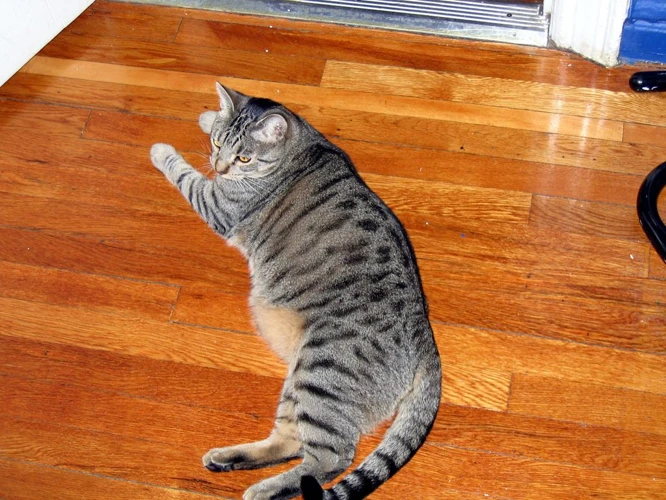
As a responsible California Spangled cat owner, you have to be proactive in preventing destructive behavior in your pet. Taking preventive measures can go a long way in ensuring your cat’s safety and well-being, as well as preserving the integrity of your property. Here are some effective strategies for preventing destructive behaviors in your California Spangled cat. Don’t forget to also check out our article on tips and tricks for dealing with aggression in California Spangled cats.
Training and Enrichment
Effective training and enrichment are crucial for preventing destructive behavior in California Spangled cats. This involves providing mental and physical stimulation, as well as positive reinforcement for good behavior. Here are some strategies to consider:
| Strategy | Description |
|---|---|
| Interactive Toys | Provide your California Spangled with toys that require interaction and problem-solving, such as puzzles or treat dispensers. This will stimulate their mind and prevent boredom. |
| Training Sessions | Spend time training your cat to follow basic commands, such as “sit” or “come.” Use positive reinforcement, such as a treat or verbal praise, when they obey. This will strengthen your bond and promote good behavior. |
| Scratching Posts | Invest in high-quality scratching posts and place them throughout your home. Encourage your cat to use them by placing treats or catnip on them. This will prevent them from scratching furniture or other surfaces. |
| Outdoor Enclosure | If possible, provide your cat with access to an outdoor enclosure or balcony. This will give them the opportunity to explore and exercise, while remaining safe. |
| Playtime | Schedule regular playtime with your cat, using toys that mimic prey, such as feather wands or laser pointers. This will satisfy their natural hunting instinct and prevent them from becoming destructive out of boredom. |
Remember, consistency is key when it comes to training and enrichment. Set aside regular time each day for these activities, and be patient and persistent with your cat as they learn new behaviors. By providing them with the mental and physical stimulation they need, you can prevent destructive behavior and foster a happy, healthy relationship with your California Spangled cat.
Setting Boundaries
Setting boundaries for your California Spangled cat is another way of preventing destructive behavior. It’s essential that they understand which areas of your home are off-limits and which are available to them. This can be achieved through a combination of physical barriers, training, and positive reinforcement.
Here are some ways to set boundaries for your cat:
| Physical Barriers | Training | Positive Reinforcement |
| Use baby gates to block off areas of the house that are forbidden to your cat | Teach your cat basic commands like “no” and “off” | Reward your cat with treats or praise when they follow the rules |
| Close doors to rooms where you don’t want your cat to go | Train your cat to use specific scratching posts or toys for playtime | Play with your cat and give them attention when they follow the rules |
| Use double-sided tape or aluminum foil to deter your cat from certain surfaces | Provide your cat with plenty of toys and playtime to keep them occupied | Be consistent with rewards and never punish your cat for breaking the rules |
By setting boundaries, you’re creating a clear structure of what’s expected of your cat and communicating those expectations effectively. Over time, your California Spangled will learn to respect these boundaries and understand where they can and can’t go. Remember to always be patient and consistent in your approach, and your cat will learn to follow the rules with time and positive reinforcement.
Redirecting Behavior
Redirecting behavior is an effective way to prevent destructive behavior in California Spangled cats. This involves redirecting the cat’s attention to a more appropriate behavior. Here are some tips on how to redirect your cat’s behavior:
- Toys: Provide your cat with plenty of toys to play with. Toys that move or make noise are particularly appealing to cats.
- Scratching Posts: Give your cat a designated scratching post. Encourage your cat to use it by rewarding them when they do so.
- Interactive Play: Play with your cat using interactive toys such as feather wands or laser pointers. This will stimulate your cat’s natural hunting instincts and provide a healthy outlet for their energy.
- Distraction: If you catch your cat engaging in destructive behavior, try to distract them with a toy or treat. This will redirect their attention to a more appropriate behavior.
Redirecting behavior can be a simple and effective solution for preventing destructive behavior in your California Spangled cat. By providing them with appropriate outlets for their energy and natural instincts, you can help your cat lead a happy and healthy life. Remember to be patient and consistent in your redirection efforts, and always reward positive behavior.
Addressing Problem Behavior
When it comes to destructive behavior in California Spangled cats, addressing the problem can be a daunting task. It can be perplexing for pet owners to figure out what is causing the destructive behavior in their furry friend. However, with patience, understanding, and a little bit of guidance, there is hope in addressing this issue. In this section, we will delve into some proven methods for addressing problem behavior in California Spangled cats. We will discuss how to identify the cause of the behavior, the importance of positive reinforcement, and when professional assistance may be necessary.
Identifying the Cause
When addressing destructive behavior in California Spangled Cats, identifying the cause of the behavior is essential in finding the right solution. An effective way to identify the cause is by creating a table that includes the behavior, the frequency of the behavior, the trigger, and the potential cause. This table will help you see patterns and identify the root cause of the destructive behavior.
For example, if your cat is chewing on plants, you may notice that it happens more often when you’re not home. Upon further investigation, you may discover that your cat is bored and chewing on the plants as a form of entertainment. By identifying the trigger and potential cause, you can create a plan to provide your cat with more mental stimulation to reduce their destructive behavior.
It’s essential to approach identifying the cause with an open mind, as there may be underlying issues that need to be addressed. It’s crucial to look beyond the behavior and try to understand the emotional state of your cat. Stress, anxiety, and boredom can all lead to destructive behavior, so it’s important to consider the overall well-being of your cat.
Table: Identifying the Cause of Destructive Behavior
| Behavior | Frequency | Trigger | Potential Cause |
|---|---|---|---|
| Scratching | Every day | After waking up from a nap | Unsatisfied urge to stretch muscles and sharpen claws |
| Chewing | When left alone | Owner leaves for work | Boredom and lack of mental stimulation |
| Biting | When playing | Playing with hands or feet | Misdirected play behavior or overstimulation |
By identifying the cause of your cat’s destructive behavior, you can take the necessary steps to address it effectively. It’s essential to remember that each cat is unique and may require different solutions. Patience and persistence are key to addressing destructive behavior in California Spangled Cats.
Positive Reinforcement
Positive reinforcement is an essential aspect of addressing destructive behavior in California Spangled Cats. Positive reinforcement means rewarding your cat for good behavior instead of punishing them for negative behavior. It is a scientifically proven training method that enhances communication between pets and their owners. Positive reinforcement encourages a cat to perform desired behaviors like using a scratching post instead of furniture, chewing on toys instead of curtains, or not biting or scratching.
To use positive reinforcement effectively, you need to establish a reward system. Rewards can be in the form of treats, toys, or verbal praise. Identify what motivates your cat the most, and use that as the reward. For example, some cats respond well to treats, while others prefer interactive playtime with their owner.
Here is an example of how to use positive reinforcement to prevent destructive scratching behavior:
| Step | Action |
|---|---|
| Step 1: | Place a cat scratching post in a visible and accessible location in your home. |
| Step 2: | Encourage your cat to use the scratching post by placing treats around it. |
| Step 3: | When your cat uses the scratching post, immediately give them verbal praise and a treat. |
| Step 4: | If your cat starts scratching furniture, gently redirect them to the scratching post and reward them when they use it correctly. |
Remember to use positive reinforcement consistently. Reward your cat every time they exhibit the desired behavior, even if it’s a small step towards it. With time, your cat will learn to associate good behavior with a positive outcome, and their destructive behavior will significantly decrease.
Positive reinforcement is a powerful tool in addressing destructive behavior in California Spangled Cats. It is a kind and humane approach to training your pet, and it strengthens the bond between you and your cat. Be patient and consistent, and your cat will soon learn the desired behavior through positive reinforcement.
Seeking Professional Help
When dealing with destructive behavior in California Spangled cats, seeking professional help may be necessary for more severe or complex situations. Vets and animal behaviorists can provide valuable insights into the underlying causes of your cat’s behavior and recommend effective solutions.
Here are some reasons why seeking professional help is important:
| Reasons to seek professional help | Benefits of seeking professional help |
|---|---|
| Identifying medical problems: Sometimes destructive behavior in cats can be caused by underlying medical conditions. A professional can rule out any medical issues that may be causing your cat’s behavior. | Early diagnosis: Identifying medical or behavioral issues early can greatly increase the chances of successful treatment. |
| Behavioral assessment: Cats are unique individuals and their behavior is complex. A professional can assess your cat’s behavior and provide insights into the underlying causes. | Individualized treatment plan: A professional can design a customized treatment plan to address your cat’s specific needs and personality. |
| Positive reinforcement training: Professionals can teach you positive reinforcement techniques that can encourage good behavior in your cat. | Effective training: Positive reinforcement training is an effective method that can change behavior without causing stress or fear in your cat. |
| Medication: In some cases, medication may be necessary to manage your cat’s behavior. | Improved quality of life: Medication can address underlying issues and greatly improve your cat’s quality of life. |
Remember, seeking professional help isn’t a sign of weakness or failure as a pet owner. It simply means that you are committed to the well-being of your cat and are willing to seek help when needed.
Conclusion
After reading this article, you should have a better understanding of the destructive behaviors commonly displayed by California Spangled cats and how to address them. It’s crucial to remember that cats are individuals, just like humans, and can exhibit behaviors that may seem unusual or frustrating to their owners. However, with patience, persistence, and the right approach, you can reduce or eliminate problem behaviors to create a happier home for you and your feline friend.
When dealing with destructive behavior, it’s important to first assess whether your cat is healthy and to rule out any medical issues that may be causing or exacerbating the behavior. Once you’ve determined that your cat is in good health, you can begin addressing the underlying cause of the behavior and implementing positive reinforcement techniques to encourage desired behaviors.
Training and enrichment, setting boundaries, and redirecting behavior are all effective strategies for preventing destructive behavior in California Spangled cats. By providing your cat with appropriate outlets for their natural instincts, like scratching posts or interactive toys, and reinforcing good behavior with treats or praise, you can encourage positive behavior and discourage negative behavior.
If your cat’s destructive behavior persists despite your efforts, it may be time to seek professional help. Your veterinarian or a behaviorist can help you identify the underlying cause of the behavior and create a plan specific to your cat’s needs.
In the end, addressing destructive behavior in cats requires patience, understanding, and a willingness to adapt your approach as needed. With time, effort, and a bit of creativity, you can help your California Spangled cat become a well-behaved and happy member of your family.
Frequently Asked Questions
What causes destructive behavior in California Spangled cats?
Destructive behavior in California Spangled cats can be caused by a variety of factors, such as boredom, lack of attention, anxiety, or territorial instincts.
What are some common destructive behaviors in California Spangled cats?
Common destructive behaviors in California Spangled cats include scratching furniture, chewing on wires or plants, and biting or scratching their owners.
Are California Spangled cats more prone to destructive behavior than other breeds?
Not necessarily. Destructive behavior can occur in any breed of cat, but some breeds may be more prone to certain types of destructive behavior due to their personalities or breed-specific behaviors.
Can destructive behavior in California Spangled cats be treated?
Yes, there are steps that can be taken to prevent and address destructive behavior in California Spangled cats, such as training, setting boundaries, and seeking professional help if necessary.
Is it okay to declaw a California Spangled cat to prevent destructive behavior?
No, declawing is a cruel and inhumane practice that can cause physical and psychological harm to cats. There are other ways to prevent destructive behavior that do not involve declawing.
What kind of toys are best for California Spangled cats to prevent destructive behavior?
Cat toys that encourage play and exercise, such as laser pointers, wand toys, and puzzle toys, can help prevent destructive behavior by keeping cats occupied and entertained.
Can diet play a role in preventing destructive behavior in California Spangled cats?
Yes, a balanced and nutritious diet can help prevent destructive behavior by ensuring that cats are getting the proper nutrients they need to maintain their physical and mental health.
Is punishment an effective way to prevent destructive behavior in California Spangled cats?
No, punishment can actually make destructive behavior worse by causing anxiety and fear in cats. Positive reinforcement and redirection are more effective methods of preventing destructive behavior.
Can environmental factors contribute to destructive behavior in California Spangled cats?
Yes, factors such as a lack of vertical space or hiding spots, or an abundance of visual stimulation from outside windows, can contribute to anxiety and destructive behavior in cats.
Should California Spangled cats be kept indoors to prevent destructive behavior?
Keeping cats indoors can help prevent destructive behavior and also protect them from outdoor dangers such as predators and traffic. However, cats should have access to plenty of toys, exercise, and mental stimulation to prevent boredom and destructive behavior.

